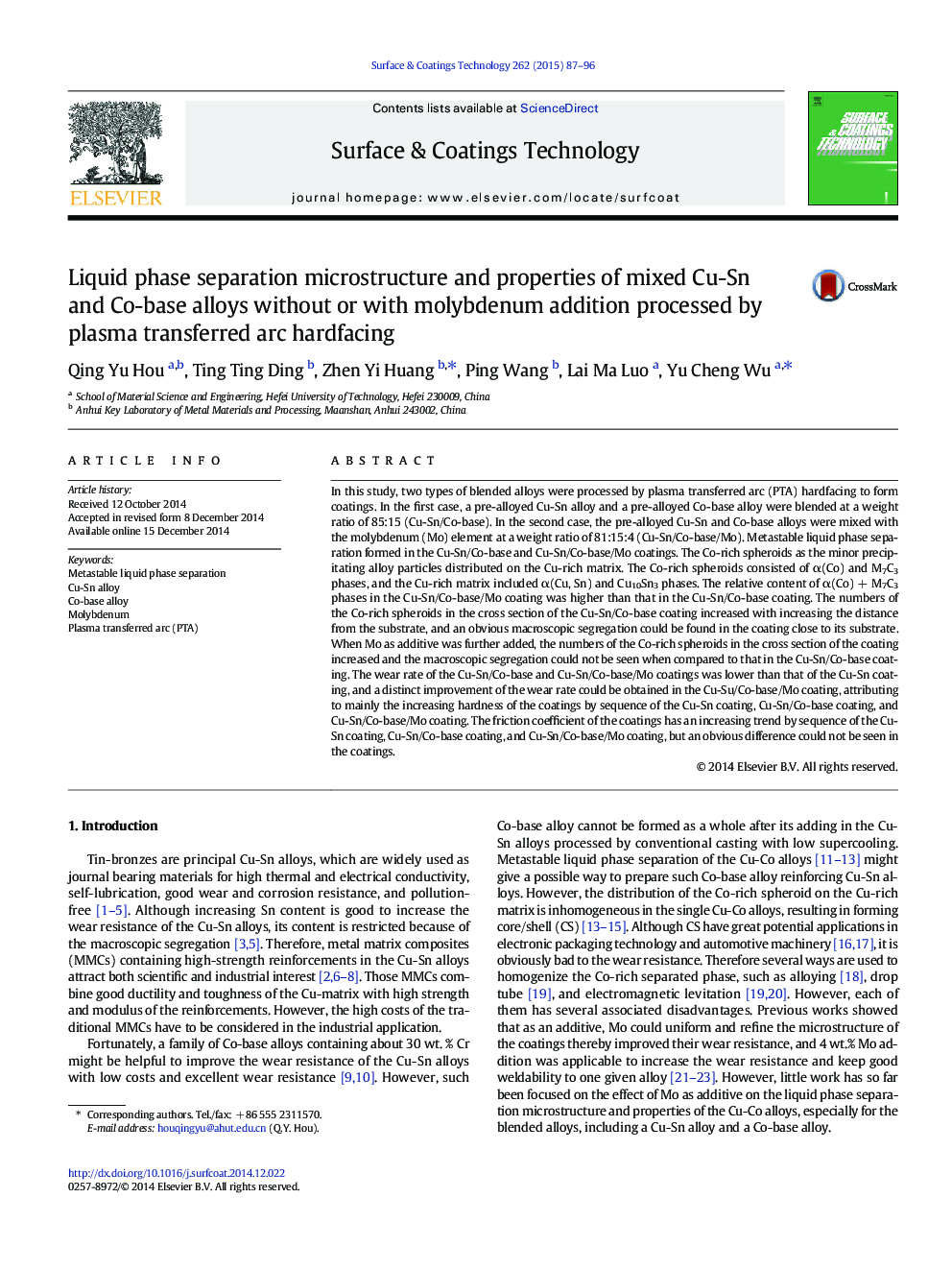| کد مقاله | کد نشریه | سال انتشار | مقاله انگلیسی | نسخه تمام متن |
|---|---|---|---|---|
| 1657199 | 1517617 | 2015 | 10 صفحه PDF | دانلود رایگان |

• Cu-Sn/Co-base coatings with or without Mo addition were prepared by PTA hardfacing.
• Liquid phase separation formed in Cu-Sn/Co-base coatings with or without Mo addition.
• Mo mainly dissolved in the separated Co-rich spheroids and increased their numbers.
• Mo addition decreased the trends to form macroscopic segregation in the coating.
• Mo addition lowered wear rate of the Co-base alloy reinforcing Cu-Sn alloy coating.
In this study, two types of blended alloys were processed by plasma transferred arc (PTA) hardfacing to form coatings. In the first case, a pre-alloyed Cu-Sn alloy and a pre-alloyed Co-base alloy were blended at a weight ratio of 85:15 (Cu-Sn/Co-base). In the second case, the pre-alloyed Cu-Sn and Co-base alloys were mixed with the molybdenum (Mo) element at a weight ratio of 81:15:4 (Cu-Sn/Co-base/Mo). Metastable liquid phase separation formed in the Cu-Sn/Co-base and Cu-Sn/Co-base/Mo coatings. The Co-rich spheroids as the minor precipitating alloy particles distributed on the Cu-rich matrix. The Co-rich spheroids consisted of α(Co) and M7C3 phases, and the Cu-rich matrix included α(Cu, Sn) and Cu10Sn3 phases. The relative content of α(Co) + M7C3 phases in the Cu-Sn/Co-base/Mo coating was higher than that in the Cu-Sn/Co-base coating. The numbers of the Co-rich spheroids in the cross section of the Cu-Sn/Co-base coating increased with increasing the distance from the substrate, and an obvious macroscopic segregation could be found in the coating close to its substrate. When Mo as additive was further added, the numbers of the Co-rich spheroids in the cross section of the coating increased and the macroscopic segregation could not be seen when compared to that in the Cu-Sn/Co-base coating. The wear rate of the Cu-Sn/Co-base and Cu-Sn/Co-base/Mo coatings was lower than that of the Cu-Sn coating, and a distinct improvement of the wear rate could be obtained in the Cu-Su/Co-base/Mo coating, attributing to mainly the increasing hardness of the coatings by sequence of the Cu-Sn coating, Cu-Sn/Co-base coating, and Cu-Sn/Co-base/Mo coating. The friction coefficient of the coatings has an increasing trend by sequence of the Cu-Sn coating, Cu-Sn/Co-base coating, and Cu-Sn/Co-base/Mo coating, but an obvious difference could not be seen in the coatings.
Journal: Surface and Coatings Technology - Volume 262, 25 January 2015, Pages 87–96